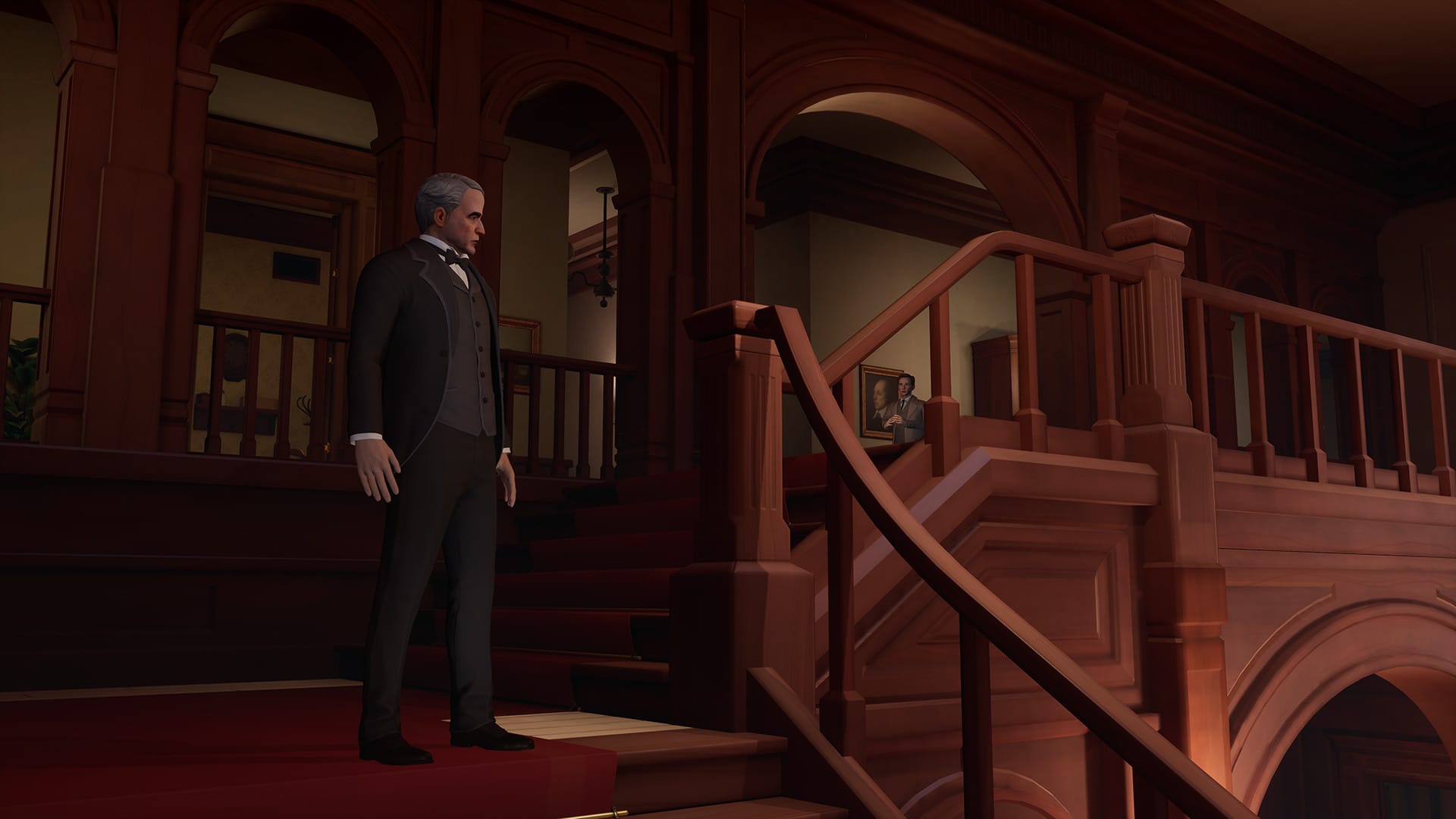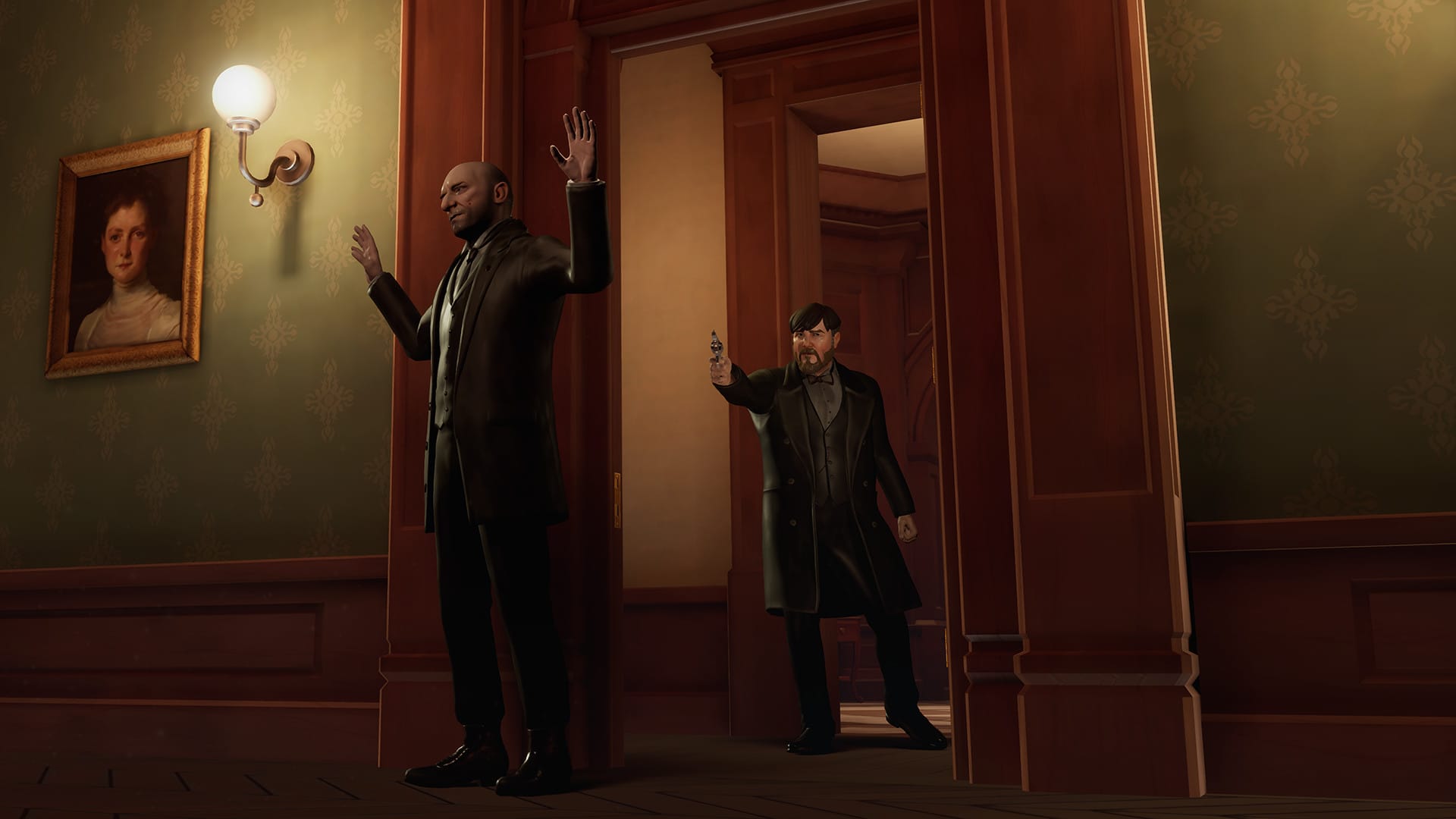The Invisible Hours’ co-creator hopes to remaster the VR murder mystery game for modern headsets, and we interviewed Rob Yescombe to learn more.
It’s been nearly eight years since The Invisible Hours first appeared on the scene, providing a detective mystery quite unlike anything we’d previously seen on SteamVR or PlayStation VR. Set in an island mansion during a storm and inspired by the works of Agatha Christie, our 2017 review considered it a “genuinely enthralling murder mystery” with “near faultless” character drama.
Flatscreen versions later arrived on both Steam and consoles, a Quest version was confirmed in 2020 but ultimately never materialized, and we’ve seen little else of it since. However, last year saw developer Tequila Works file for insolvency, and an auction then followed back in April with the rights to the studio’s IP catalog. It’s here where Yescombe found an opportunity.
“I thought, when am I as an artist ever getting a chance like this again? To own something that I made,” Yescombe tells me over a recent video call.
Yescombe’s history across VR began with Tilt Brush, later working on PlayStation VR exclusive Farpoint after being shown a vertical slice demo. His work has since extended to Twilight Zone VR and Arizona Sunshine 2, alongside various film and flatscreen gaming projects, though The Invisible Hours is one of his earlier efforts in VR.
Working as its original co-creator, writer, and narrative director, The Invisible Hours’ development started when VR hardware hadn’t truly established itself, but the technology was on the way. Tequila Works and Yescombe began exploring what you could do in VR that you wouldn’t do as actively in flatscreen games.
“The answer to that was, look around. That was the one thing that everybody could do. Even if your grandmother puts on a VR headset, she knows she can look left and right. She understands that. So we thought, let’s build something that’s about observation. That was the nucleus we started to grow from.”

Aiming for something structurally different from what you’d normally see in a game narrative, The Invisible Hours lets you explore different threads while arriving at a fixed point. Instead of creating different narratives depending on a select choice, the team aimed to tell a story more like real life, where all the unfolding stories are perfectly synchronized.
What you witness depends on your location at a specific moment. You can technically clear the story in an hour, though the mansion has seven suspects to investigate. This means there are seven hours of a concurrent narrative occurring within this single hour, and no instructions on whom you should follow. Spending time in one place means missing events somewhere else, giving you different opinions on what exactly happened.
Ultimately, the original release didn’t sell as well as the studio hoped, with PlayStation VR headset adoption not matching their expectations.
“When we started planning and budgeting for it, a third party whose job it was to predict hardware sales data projected the PSVR would do five to six million units in Q4 that year. It only did half a million. So it meant that even though the game was critically very well reviewed, even though players reviewed it very highly, there wasn’t a market for it to sell into.”
He points out that the VR market has changed considerably since then, stating headset sales have increased since then by tens of millions of units. Pointing to The Invisible Hours’ critical success and the fact that the game’s already made, he’s looking to find a publisher willing to bring this to a new audience once more.
“The vision is we want to remaster this thing. For the wider audience, that is essentially a new product for them. And for a publisher who buys into that, they’re getting all the production spend essentially for the price of a remaster.”
Alongside a direct remaster, Yescombe is exploring a screen adaptation. Which begs the question, how do you adapt such an unconventional narrative structure for a more linear format such as film or TV?
“The Invisible Hours is, first and foremost, written in a way that you can experience it linearly. You’re still getting lots of revelations and plot twists if you follow it in a straight line all the way through, and then follow another character. So in that sense, you could do a straight adaptation. There is, of course, the other way of thinking about it, which is, I’m not saying this is necessarily what we would do, but as an example. You could do it as a miniseries. Every episode is a different character’s perspective, and it’s a miniseries where you get to watch the episodes in whatever order you like.”

One of the structure’s early inspirations is a Reddit thread where new parents were figuring out the best order to show their kid the Star Wars movies. He points to how your perspective of who Darth Vader is changes when you watch the prequel trilogy before the original trilogy and vice versa.
For the screen adaptation, Yescombe says it’s not about lots of interactivity but, “having something that allows people to finesse their experience with a small and very occasional choice of, which episode do I watch?”
Much of the planned remaster’s specifics will likely be publisher-dependent, so it’s too early to confirm anything more there, though it’s unlikely we’ll see an expanded story. That also means Yescombe can’t confirm platforms just yet, though he’s keen to see The Invisible Hours reach Quest.
“I would love to see this finally come to Quest. I also think it’s a natural for PS VR2, and we should also talk about Steam as well. But for me personally, as someone who uses Quest 3 every day and just for my own personal convenience, it would be great to have it there.”
What comes next for this multimedia project remains to be seen, but we’ll be keeping a close eye on further developments. Until then, The Invisible Hours remains available on PC VR and PlayStation VR.
This article was originally published on uploadvr.com